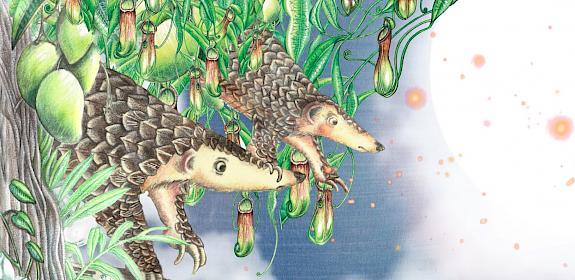Call for rhino programme to be extended
Cambridge, UK, 14th March 2008—Numbers of African rhinos have recovered spectacularly in parts of Africa, and there are calls for the successes to be repeated elsewhere. The calls come as government, wildlife, eco-tourism and community representatives from across southern Africa meet on the tenth anniversary of WWF’s African Rhino Programme.

At the time of its formation, there were 8,466 White Rhinos and 2,599 Black Rhinos in the wild. Today, the figures are 14,500 and 4,000 respectively.
The Programme currently operates in South Africa, Namibia, Kenya and Zimbabwe, but is seeking to extend its operations to more of Africa. Work on rhino trade issues conducted by TRAFFIC, the wildlife trade monitoring network, forms part of the WWF African Rhino Programme.
“What we have shown is that in partnership with governments and communities and business it is possible to stave off extinction for the rhino in some of its former range,” said Dr Susan Lieberman, WWF International’s Global Species Programme Director.
Black rhino numbers across Africa fell from an estimated 65,000 in the 1970s to around 2,400 in 1995, largely due to poaching for their horns which were shipped to lucrative markets in the Middle East and Asia. Relentless hunting by European settlers saw African rhino numbers plummet and the Southern White Rhino was thought to be extinct by the late 19th century.
Key to the recovery of both species was the Convention on International Trade in Endangered Species of Wild Fauna and Flora (CITES), which has enabled a combination of regulatory and incentive measures.
In 1977, both species were listed in Appendix I of CITES, prohibiting all international trade in rhino parts and products. Populations of White Rhino in South Africa and Swaziland have since been moved to Appendix II, where limited sustainable use options have provided economic incentives for further investment in rhino conservation.
However, in June 2007, a TRAFFIC report presented to CITES parties showed an increase in the volume of rhino horn entering illegal trade from Africa since 2000, with poaching most severe in Zimbabwe and the Democratic Republic of Congo, where 12% and 60% of their rhino populations respectively were illegally killed between 2003 and 2005.
“Rhino poaching and horn trade by organized criminals is an ongoing problem in Africa, requiring better cross-border collaboration between countries situated along smuggling routes, such as South Africa and Zimbabwe,” said TRAFFIC’s Simon Milledge, and author of the CITES report.
“To prevent horns leaking to the illegal market, rhino range States need to ensure secure management of horn stocks, whilst more stringent controls over legally-acquired rhino hunting trophies are needed in South Africa.”
At the 14th Conference of the Parties to CITES in June 2007 (CoP14), TRAFFIC was mandated to review information on worldwide stockpiles of rhino horn and investigate routes by which horns leak into illegal markets. A report will be provided to the CITES Secretariat before the next meeting of CITES Parties (CoP15) in 2010.




